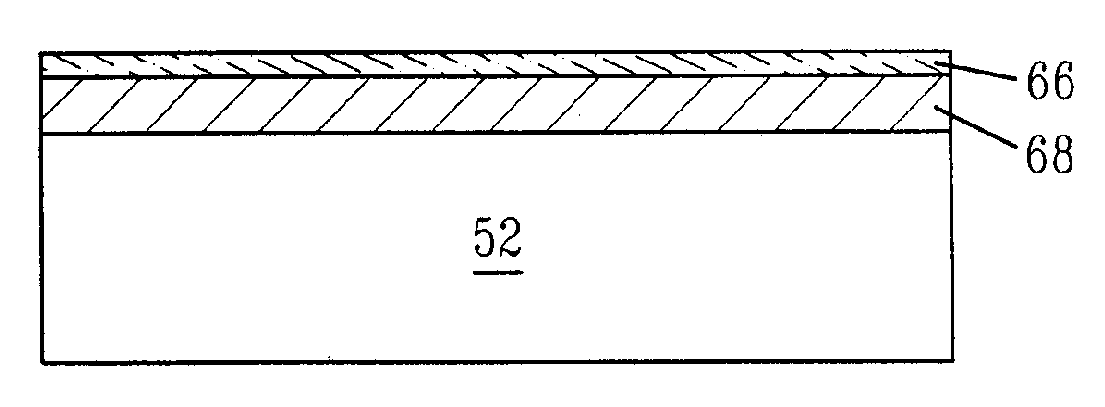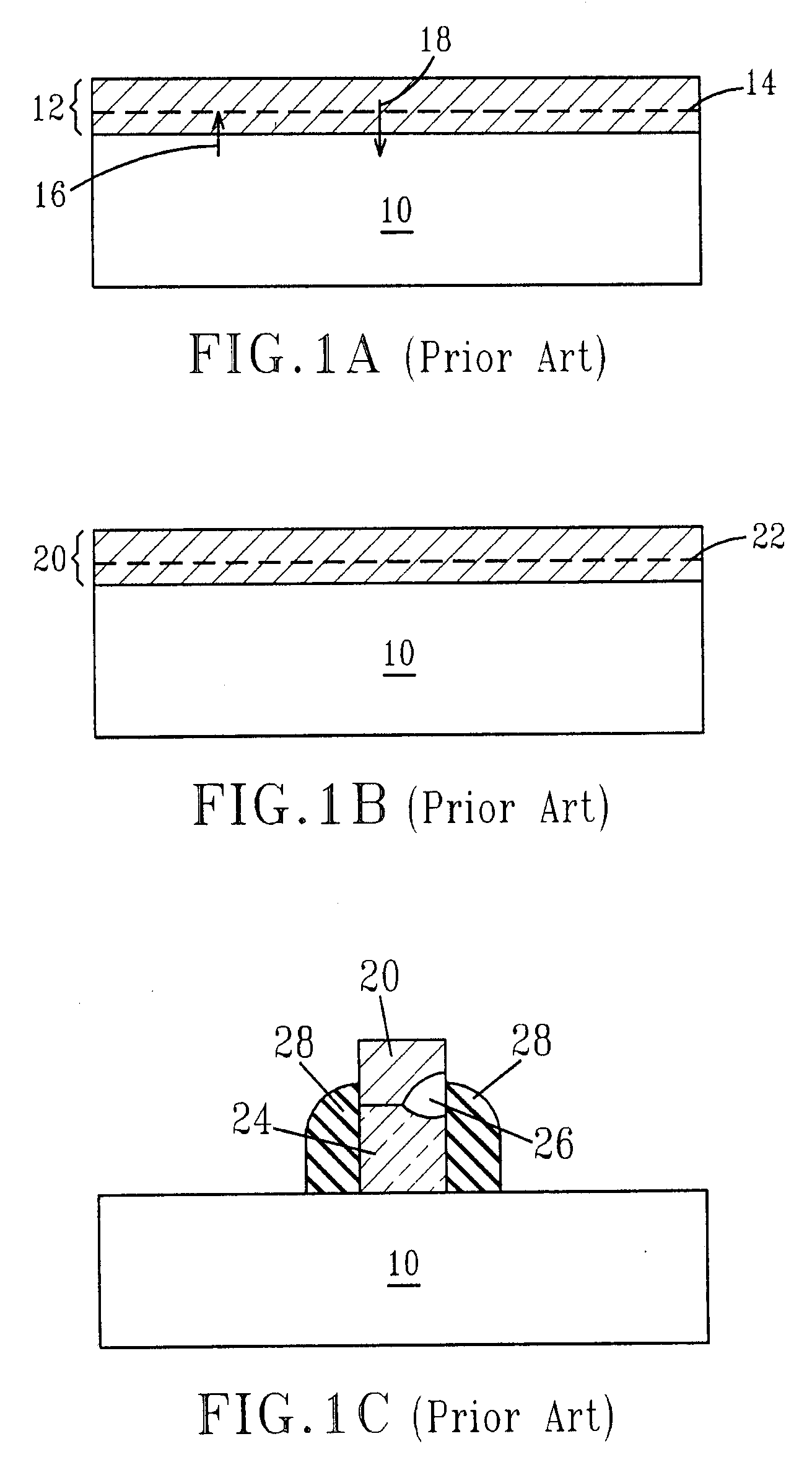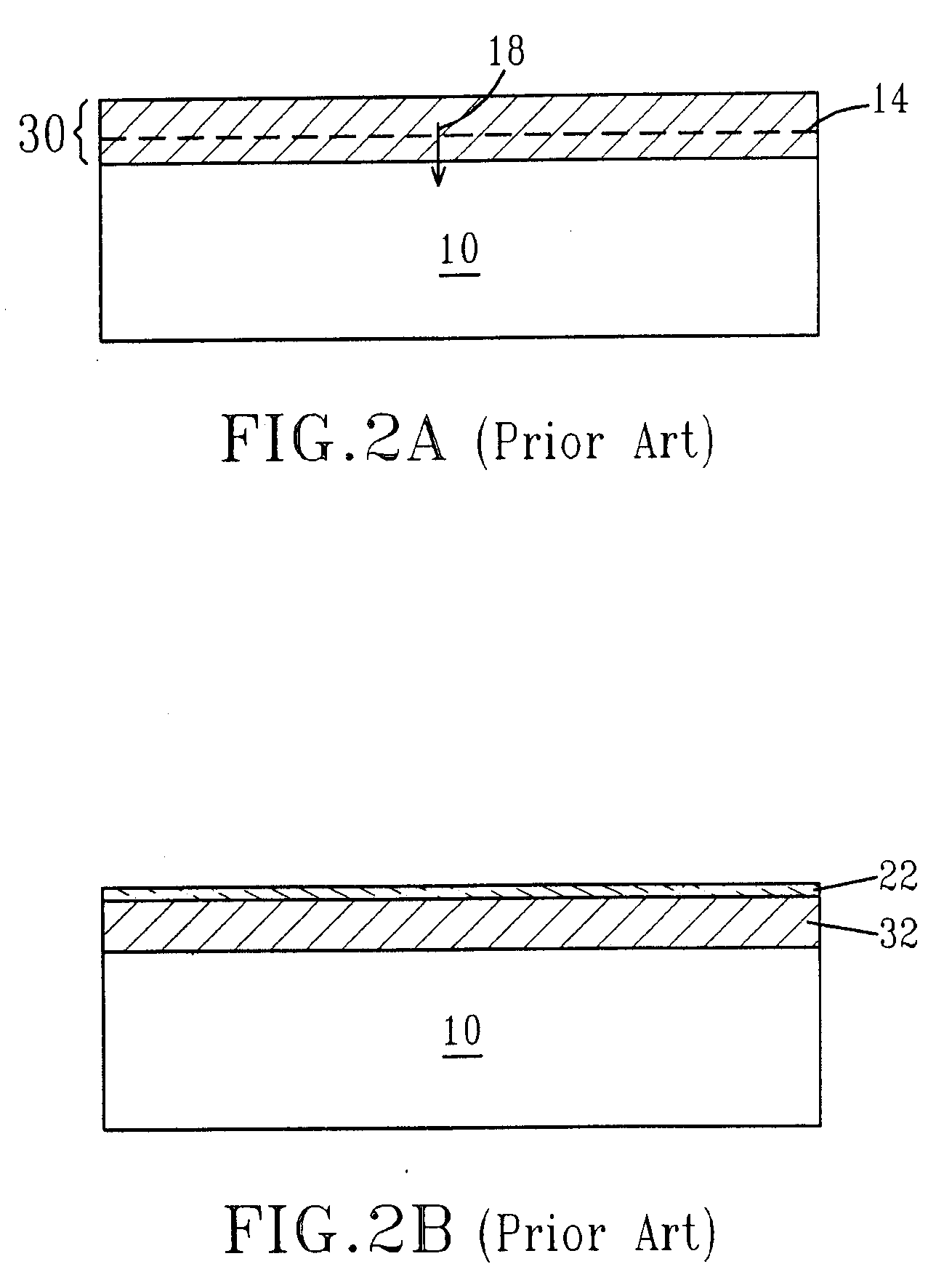Structure and method for enhanced uni-directional diffusion of cobalt silicide
- Summary
- Abstract
- Description
- Claims
- Application Information
AI Technical Summary
Benefits of technology
Problems solved by technology
Method used
Image
Examples
Embodiment Construction
[0026] The present invention, which provides a method of forming a metal silicide atop a Si-containing material utilizing a first anneal that includes two distinct thermal cycles as well as the structure that is formed from the inventive method, will now be described in greater detail. It is noted that the drawings of the present application are provided for illustrative purposes and thus they are not drawn to scale.
[0027] Reference is made to FIGS. 3A-3F which illustrate the basic processing steps of the present invention that are capable of forming a CMOS structure containing a low resistance thick metal silicide in which the Si consumption and the bridging has been significantly reduced. By “thick”, it is meant a metal silicide that has a thickness from about 14 to about 25 nm. Specifically, FIG. 3A illustrates an initial structure 50 that is formed after the first step of the present invention has been performed. Specifically, the structure 50 comprises a Si-containing material...
PUM
 Login to View More
Login to View More Abstract
Description
Claims
Application Information
 Login to View More
Login to View More - R&D
- Intellectual Property
- Life Sciences
- Materials
- Tech Scout
- Unparalleled Data Quality
- Higher Quality Content
- 60% Fewer Hallucinations
Browse by: Latest US Patents, China's latest patents, Technical Efficacy Thesaurus, Application Domain, Technology Topic, Popular Technical Reports.
© 2025 PatSnap. All rights reserved.Legal|Privacy policy|Modern Slavery Act Transparency Statement|Sitemap|About US| Contact US: help@patsnap.com



